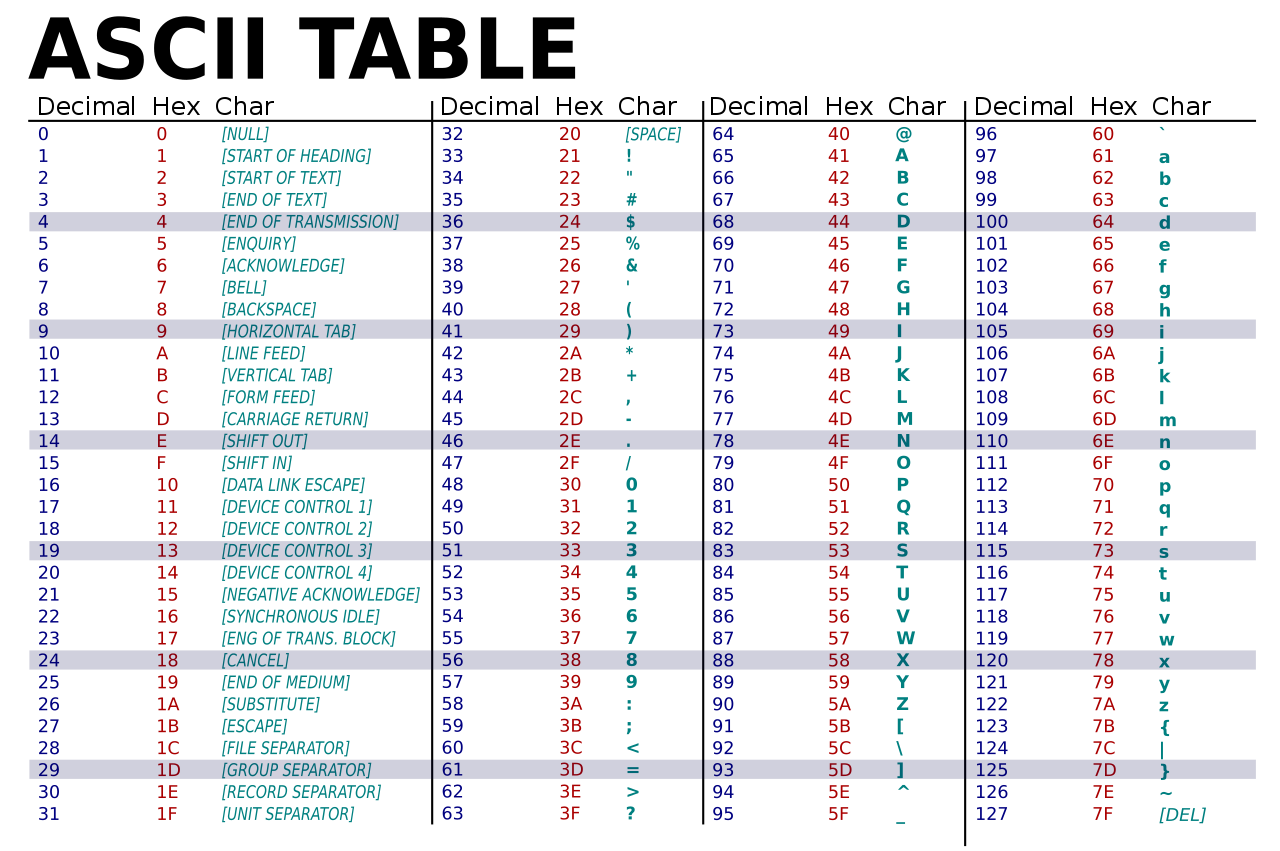Representing Non-Numbers in Binary
Using bits to represent useful non-numeric data
Key Concepts |
|
Terms
| Term | Meaning |
|---|---|
| Binary | Base 2 numbers. |
| Decimal | Base 10 numbers. |
| Hex or Hexadecimal | Base 16 numbers. |
| Place or Place Value | Value of a single number in multi-symbol value. Example: In the number 12345, the Place Value if the 3 is 300. |
| Signed | Numbers that represent negative, zero, and positive values. |
| Symbols | Written characters used to depict numbers. Symbols represent to represent Decimal are 0,1,2,3,4,5,6,7,8,9. |
| Unsigned | Numbers that represent only zero and positive values. |
Introduction
ASCII
The American Standard Code for Information Interchange (ASCII) standard defines printable and non-printable text characters for telecommunication equipment. The standard was initiated in the early 1960s to define how digital equipment could consistently communicate information, primarily for human consumption.
This standard defines 8-bit strings used to transmit text characters between systems. ASCII values 32 - 126 are the printable characters
The standard include some control standards used to send configuration or command actions to the receiving equipment.
Examples ASCII value 7 is the BEL command. When sent to another system, such as a printer, it would cause the receiving device to sounds an audible alarm to notify the operator of something, such as print job is done
ASCII values 0 - 31 & 127 are commands.
ASCII Table
 CC Attribution-ShareAlike License 3.0. Wikimedia Foundation, Inc., a non-profit organization.
CC Attribution-ShareAlike License 3.0. Wikimedia Foundation, Inc., a non-profit organization.
Unicode
ASCII is limited to english characters and punctuation characters. In addition, as communication between devices changed with networks, the simple command character were no longer needed. In the late 1980s Xerox and Apple engineers began on a standard to represent characters and languages from around the world.
As of Unicode version 14.0, September 2021, the standard represents 159 different scripts or character sets and 144,697 individual characters.
Unicode
Conclusion
Computer architectures can convert numbers to characters when instructed by the assembly program. The architecture does not store actual characters, but numbers that refer to characters on the ASCII or UniCode standard.
Assembly programmers must be aware of how an architecture converts between numbers and characters to ensure it is performed when required by the program.
